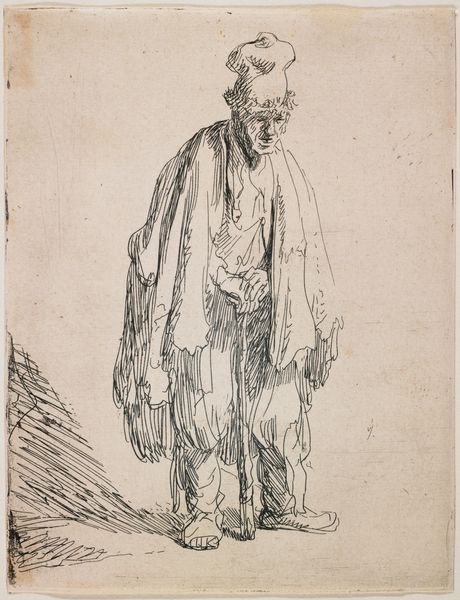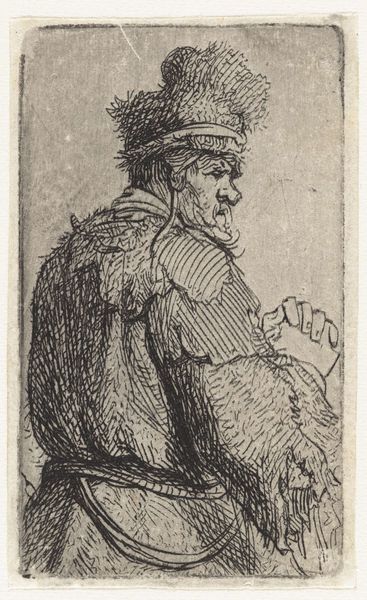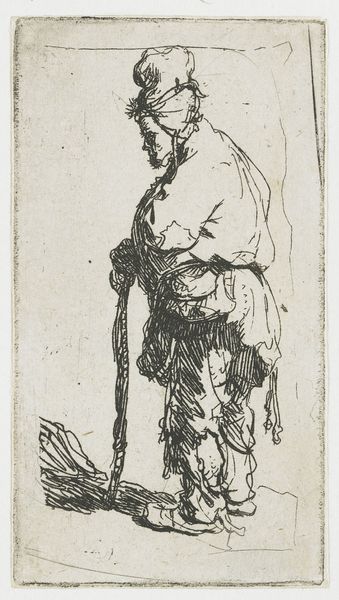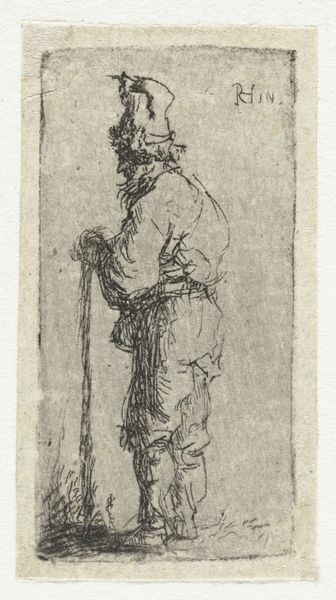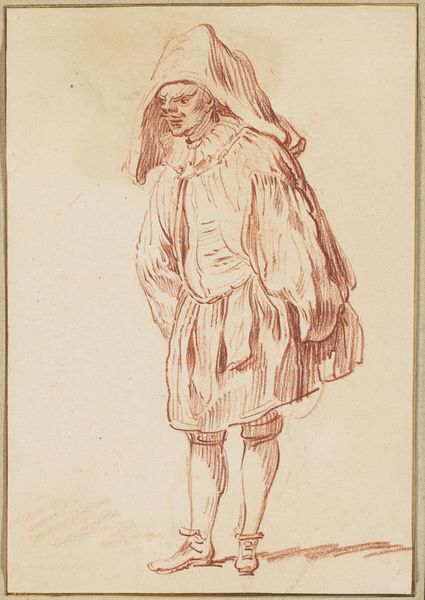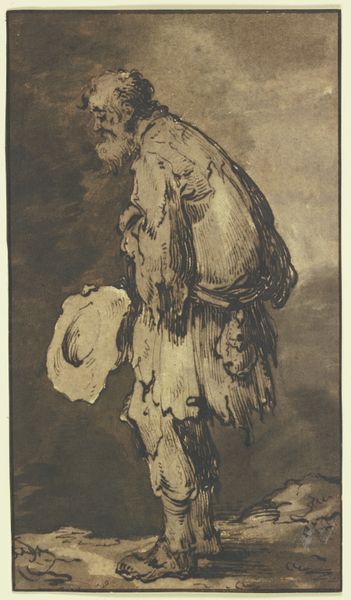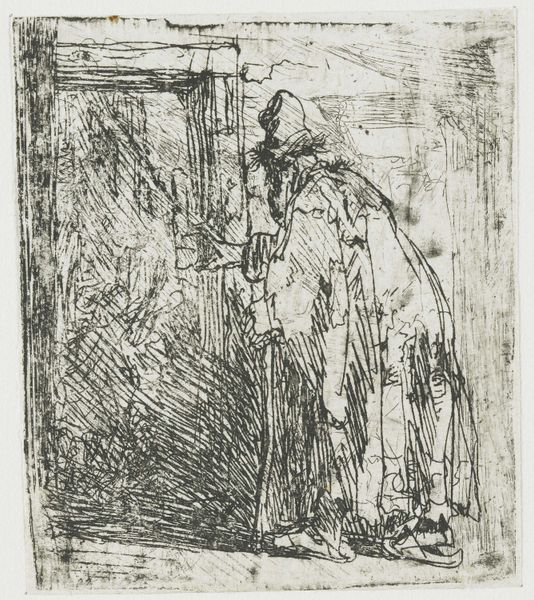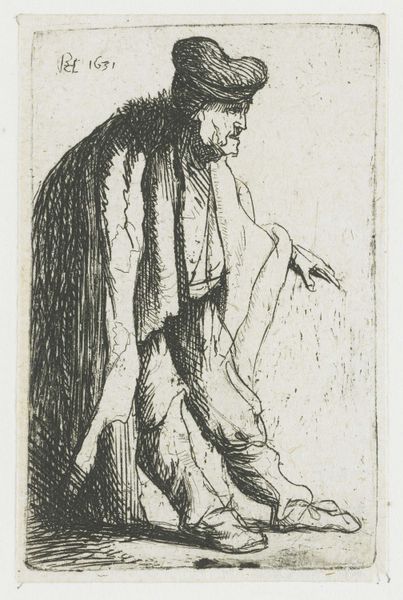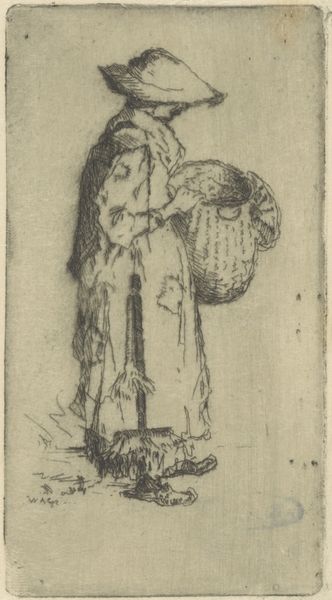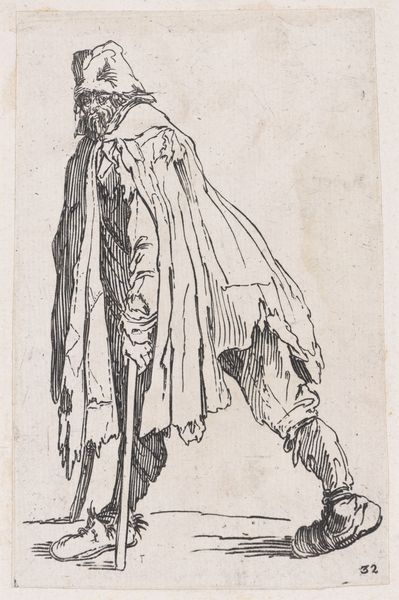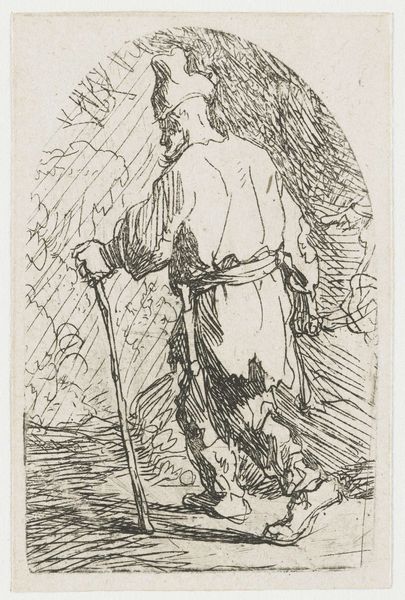
drawing, ink
#
portrait
#
drawing
#
pen sketch
#
pencil sketch
#
figuration
#
ink
#
realism
Dimensions: height 118 mm, width 84 mm
Copyright: Rijks Museum: Open Domain
Curator: Léopold Flameng created this pen and ink drawing, titled "A Stout Man in Large Cloak" around 1859. It strikes me immediately with its stark, almost rough quality. What’s your first impression? Editor: I am immediately drawn to the expressive, almost frenetic lines. The stark contrast of light and shadow, created purely through line work, gives the figure a weighty presence despite the lightness of the medium. Curator: Absolutely. The choice of ink on paper really highlights the social implications, placing a common man within artistic representation. We can think about the construction of identity in mid-19th century France. Editor: I find the focus on the formal elements more compelling. Notice how Flameng uses a complex network of hatching and cross-hatching to describe form. This technique effectively conveys volume, particularly in the figure's large cloak, giving him a rather monumental feel despite the drawing's intimate scale. Curator: Well, his clothing and posture, along with the date of creation, open an interesting dialogue about social class. Is he weary? Is his burden personal or representative of a larger struggle during that era? There’s so much potential to dissect the political and social milieu reflected in his portrayal. Editor: That’s a valid interpretation, though it might overlook the pure visual interest. Observe the deliberate ambiguity in his features; they are merely suggested, which invites a semiotic analysis on the indexical quality of the portrait. We see a stout man, yet Flameng avoids prescribing his individuality. Curator: True, this man is simultaneously unique and everyman, both an individual and representative of the disenfranchised perhaps. That ambiguity itself makes him interesting through an intersectional lens. The piece invites reflections about representations of labor and poverty in art history. Editor: For me, this ambiguity underscores the power of suggestion and the artistic choice to evoke feeling through minimal means. I am captivated by the skillful simplicity—how a few lines create such an imposing presence. Curator: So, while you are absorbed by line and shadow, I find myself pondering about identity, and its social representation during a very specific time in history. A beautiful collision of technique and representation, no doubt. Editor: Agreed, the enduring fascination lies precisely in these multiple interpretive layers, where formal rigor meets historical contemplation, offering more than just a sum of lines.
Comments
No comments
Be the first to comment and join the conversation on the ultimate creative platform.
